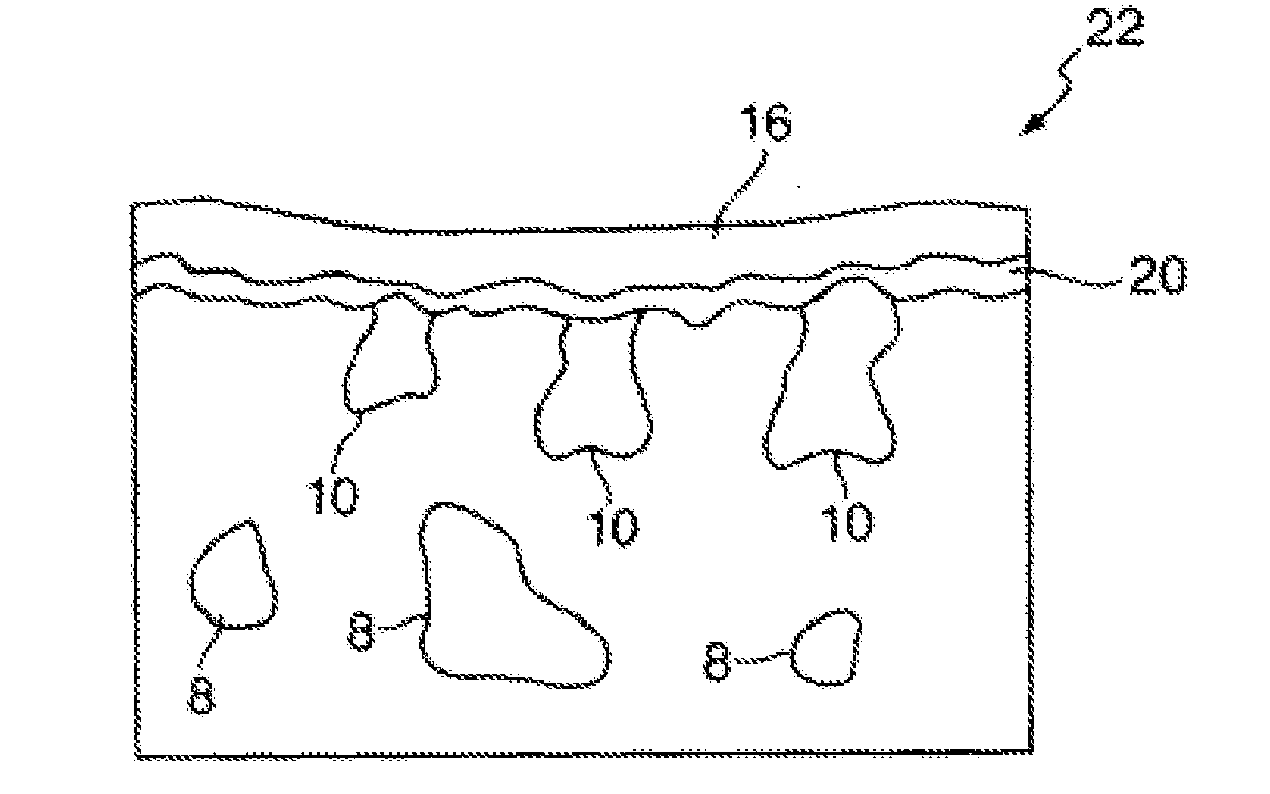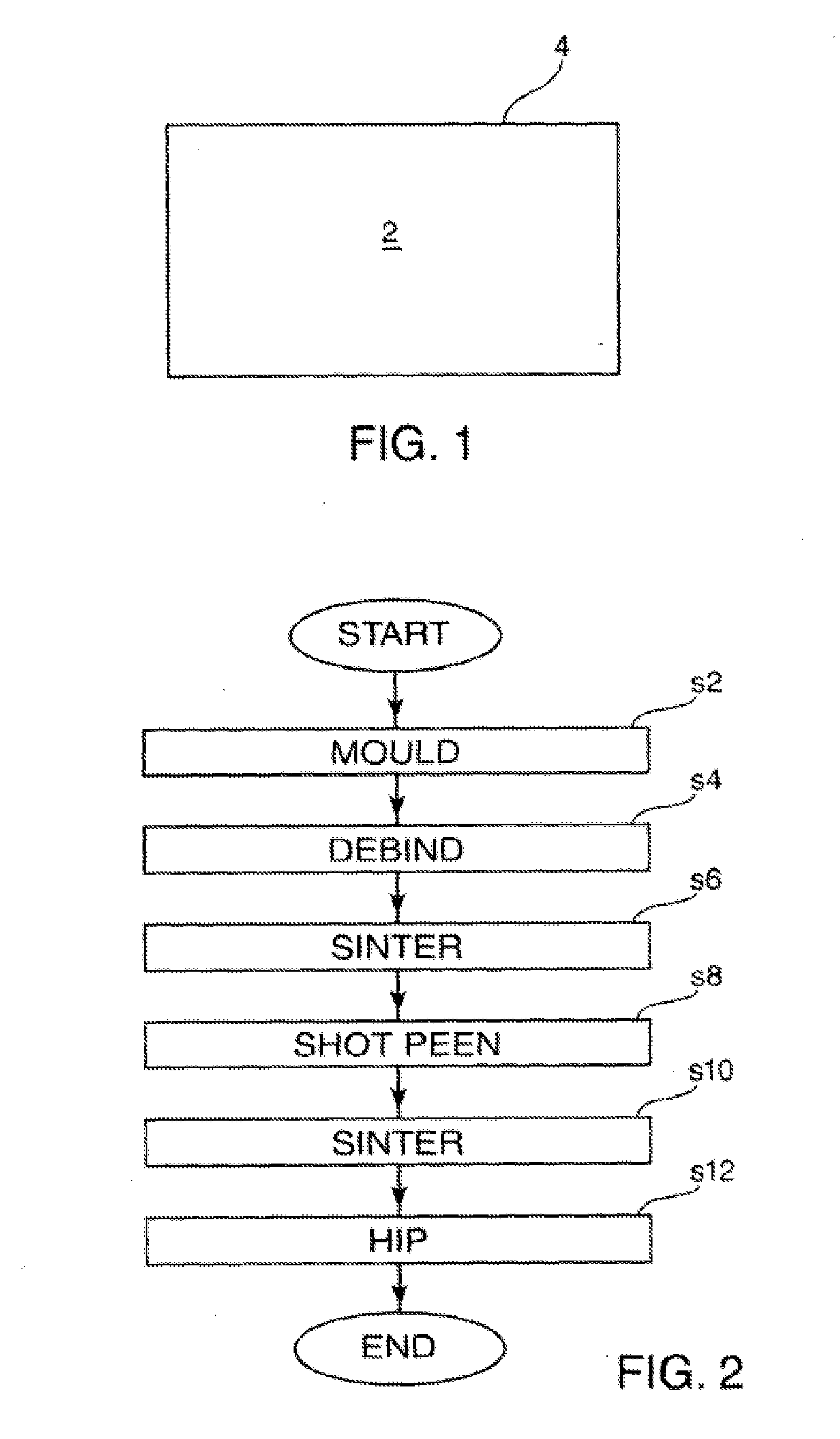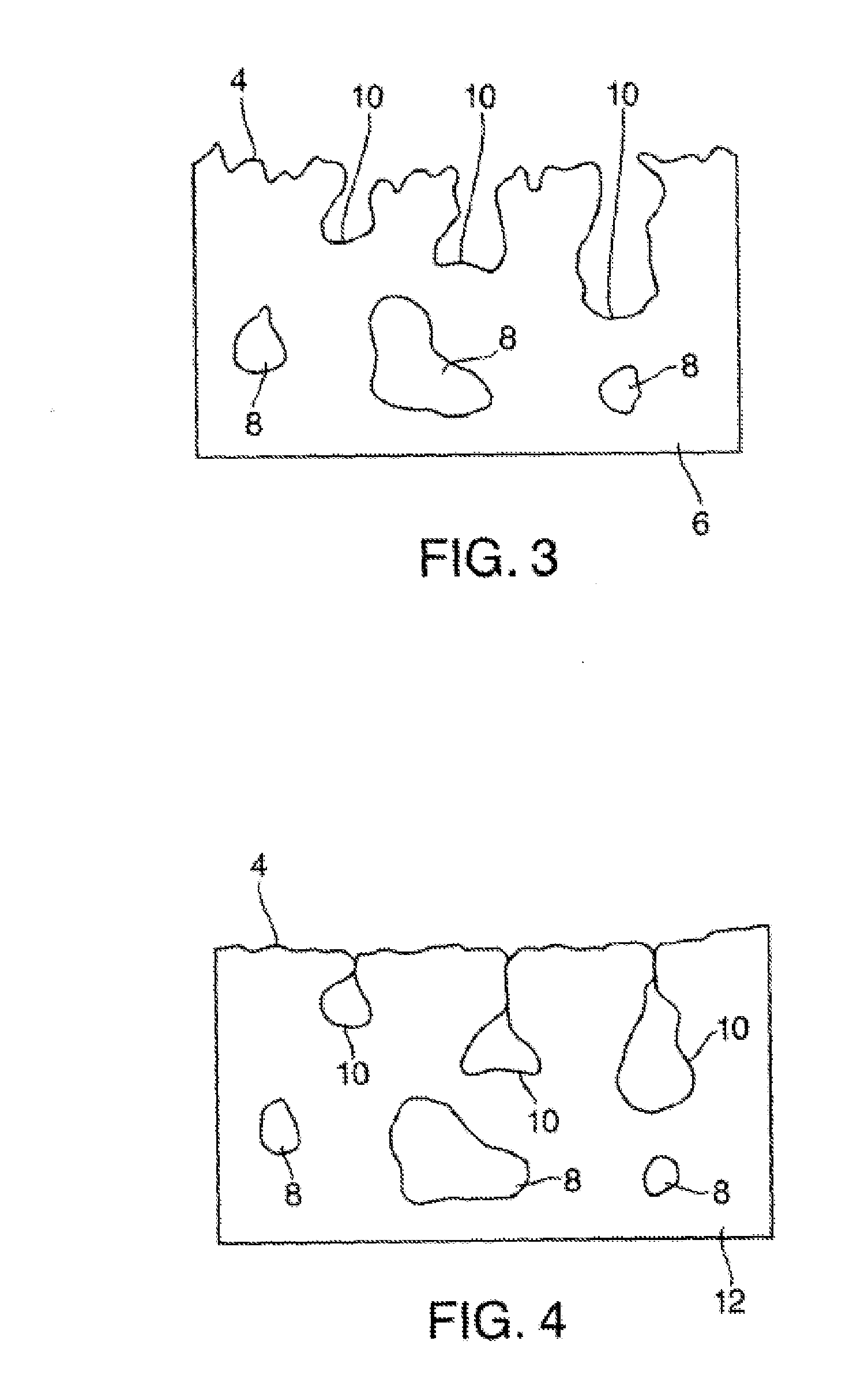Processing of metal or alloy objects
a technology of metal or alloy objects and processing equipment, applied in the field of objects, can solve problems such as adversely affecting the fatigue performance of objects, and achieve the effect of reducing the size of the closed cavity
- Summary
- Abstract
- Description
- Claims
- Application Information
AI Technical Summary
Benefits of technology
Problems solved by technology
Method used
Image
Examples
first embodiment
[0035]FIG. 1 is a schematic illustration (not to scale) of an object 2. The object 2 is made of a titanium alloy. The object 2 may be any appropriate object e.g. a component part of a machine or machinery. The object has a surface 4. a process of producing the object 2 will now be described.
[0036]FIG. 2 is a process flow chart showing certain steps of a first embodiment of a process of producing the object 2.
[0037]At step s2, a metal injection moulding process is performed to produce a so-called “green part”.
[0038]In this embodiment, a conventional metal injection moulding process is performed. A relatively finely-powdered alloy is mixed with binder material to produce a so called “feedstock”. This feedstock is shaped using an injection mould process to produce the green part.
[0039]In this embodiment, the alloy is titanium with 6% aluminium and 4% vanadium (also known as Ti-6Al-4V, or 6-4, 6 / 4, ASTM B348 Grade 5).
[0040]At step s4, after the green part is cooled and de-moulded, a por...
second embodiment
[0071]FIG. 7 is a process flow chart showing certain steps of a process of producing the object 2.
[0072]At step s14, a metal injection moulding process is performed to produce a green part. This is done as described above with reference to step s2 of FIG. 2.
[0073]At step s16, a portion of the binder material is removed from the green part to produce a brown part. This is done as described above with reference to step s4 of FIG. 2.
[0074]At step s18, a sintering process is performed on the brown part to produce a sintered part 6. This is done as described above with reference to step s6 of FIG. 2.
[0075]The sintered part 6 at step s18 is as described above with reference to FIG. 3.
[0076]At step s20, the surface 4 of the sintered part 6 is coated, or plated, with a layer of copper.
[0077]The coating of the surface of the sintered part 6 may be performed using any appropriate coating or plating process, for example electro-plating.
[0078]FIG. 8 is a schematic illustration (not to scale) of...
PUM
| Property | Measurement | Unit |
|---|---|---|
| temperature | aaaaa | aaaaa |
| temperature | aaaaa | aaaaa |
| surface roughness | aaaaa | aaaaa |
Abstract
Description
Claims
Application Information
 Login to View More
Login to View More - R&D
- Intellectual Property
- Life Sciences
- Materials
- Tech Scout
- Unparalleled Data Quality
- Higher Quality Content
- 60% Fewer Hallucinations
Browse by: Latest US Patents, China's latest patents, Technical Efficacy Thesaurus, Application Domain, Technology Topic, Popular Technical Reports.
© 2025 PatSnap. All rights reserved.Legal|Privacy policy|Modern Slavery Act Transparency Statement|Sitemap|About US| Contact US: help@patsnap.com



